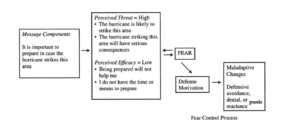Addressing the requirements on public information in EP&R from BSS Directive (Articles 70 and 71)
1 st December 2016 in Luxembourg
Seminar co-organised by the European Commission and NTW
Objectives
EU Member States are required to transpose into national law the 2013 Basic Safety Standards Directive by February 2018. The 1 st December seminar will be dedicated to the topic of public information (Articles 70 and 71 of the BSS Directive (2013/59/Euratom) and Article 8 of the amended nuclear safety Directive (2014/87/Euratom)) on how to ensure good and effective information to the members of public in the preparatory phase and during the emergency phase (Emergency Preparedness and Response – EP&R).
This seminar will bring the potential contribution of the Civil Society to ensure an effective and qualitative transposition of the BSS Directive in view of EP&R provisions, and will give recommendations on how to engage civil society in this process. The Council of the European Union has requested the Commission to organize workshops to facilitate more consistent transposition and implementation of the BSS Directive.
A year after the BSS workshop « More effective EP&R arrangements » 1 , this event will be an opportunity to share civil society’s experiences and concrete findings in order to support policy makers and regulators in the process of implementing the directive. Based on civil society’s experiences and findings and taking account of regulators’ views, the aim of the seminar is to putting forward possible concrete solutions and to highlight examples of good practice that are being used today within and outside the EU.
Click here to see the agenda.
PROGRAM
I – PLENARY: Introductory session
Nadja ZELEZNIK, Chair of Nuclear Transparency Watch
Ioanna METAXOPOULOU, Head of Unit D2 – DG ENER, European Commission
FIRST SESSION : The legal context (Chair: Ioanna Metaxopoulou, EC)
Bharat PATEL, Unit D3 – DG ENER, European Commission “Presentation of the BSS Directive Articles 70 and 71 and Article 8 of the amended nuclear safety directive”
Jan Ole Voß , laywer à Becker Büttner Held, Brussels – Europe “Civil society analyze of Directives requirements on public information”
Jan Ole Voß “Civil society analysis of Directives requirements on public information”
SECOND SESSION: National Experiences in emergency preparedness and response Chair: Pierre KOCKEROLS, JRC- European Commission
Jean-Claude DELALONDE, chairman of ANCCLI, France “Understanding of the population in emergency preparedness”
Jean-Claude DELALONDE: “Understanding of the population on in emergency preparedness”
Jean-Luc LACHAUME, French Nuclear Safety Authority (ASN), France “Emergency Response and communication in France”
Nadja ZELEZNIK, Regional Environmental Center, Slovenia “Main challenges of public information in emergency preparedness in Europe”
Nadja ZELEZNIK: “Main challenges of public information in emergency preparedness in Europe”
Pr. Gilbert EGGERMONT, the Belgian Health Council, Belgium “Presentation of the report of the Belgian Health Council on emergency planning ”
Pr. Gilbert EGGERMONT: “Presentation of the report of the Belgian Health Council on emergency planning “
Albena SIMEONOVA, Foundation for Environment and Agriculture (FEA), Bulgaria “The needs of citizens for a good information”
Ms Simeonova
Dr. Matthias ZÄHRINGER, Federal Office for Radiation Protection, Germany “EP&R and Information – the situation in Germany”
Dr. Matthias ZÄHRINGER: “EP&R and Information – the situation in Germany”
Tatiana DURANOVA, VUJE, Slovakia “Stakeholder engagement and dialogue and their role in the improvement of the decision-making process in Slovakia”
Tatiana DURANOVA:”Stakeholder engagement and dialogue and their role in the improvement of the decision-making process in Slovakia”
THIRD SESSION: International perspectives Chair: Nadja ZELEZNIK, Nuclear Transparency Watch
Marie-Lène GAAB, ACRO, France, ” Citizen involvement in the measurement of radioactivity in the context of Fukushima”
Marie-Lène GAAB, ACRO, France, ” Citizen involvement in the measurement of radioactivity in the context of Fukushima”
Azby BROWN, Safecast, Japan Screening of a video presentation “Innovative tools for emergency response”
Vincent COVELLO, Director of the Center for Risk Communication, USA Screening of a video presentation “Emergency communication in USA”
II. WORKSHOPS : BSS requirements on public information in practice
Two working groups gathering civil society’s representatives and policy makers will discuss particular items of the BSS Articles 70 and 71 and the linked Annex XI, and the Article 8 of the nuclear safety Directive. Each working group will be animated by a moderator and will select a rapporteur for the plenary roundtable.
This workshop will be the opportunity to comment these articles and to give practical facts and examples of engaging stakeholders. National authorities representatives will be invited to describe the implementation of these requirements, and Civil Society representatives will support them by noting the public understanding and public participation challenges and opportunities of social and traditional media, and innovative information and communication tools.
Workshop A: Quality Information in the preparation phase (Article 70) Moderators: Nadja Zeleznik(NTW)/ Mihaela Mihaila (DG ENER)
Workshop B: Quality Information in the in the context of emergency (Article 71) Moderators: Philip Kearney (NTW)/ Bharat Patel (DG ENER)
III. CONCLUSIONS FROM WORKSHOPS IN PLENARY
Chair: Pierre KOCKEROLS, JRC- European Commission
Rapporteur A & Rapporteur B
IV. CLOSING REMARKS : How to go further?
Nadja ZELEZNIK, Chair of Nuclear Transparency Watch
Bharat PATEL, DG ENER, European Commission



You must be logged in to post a comment.